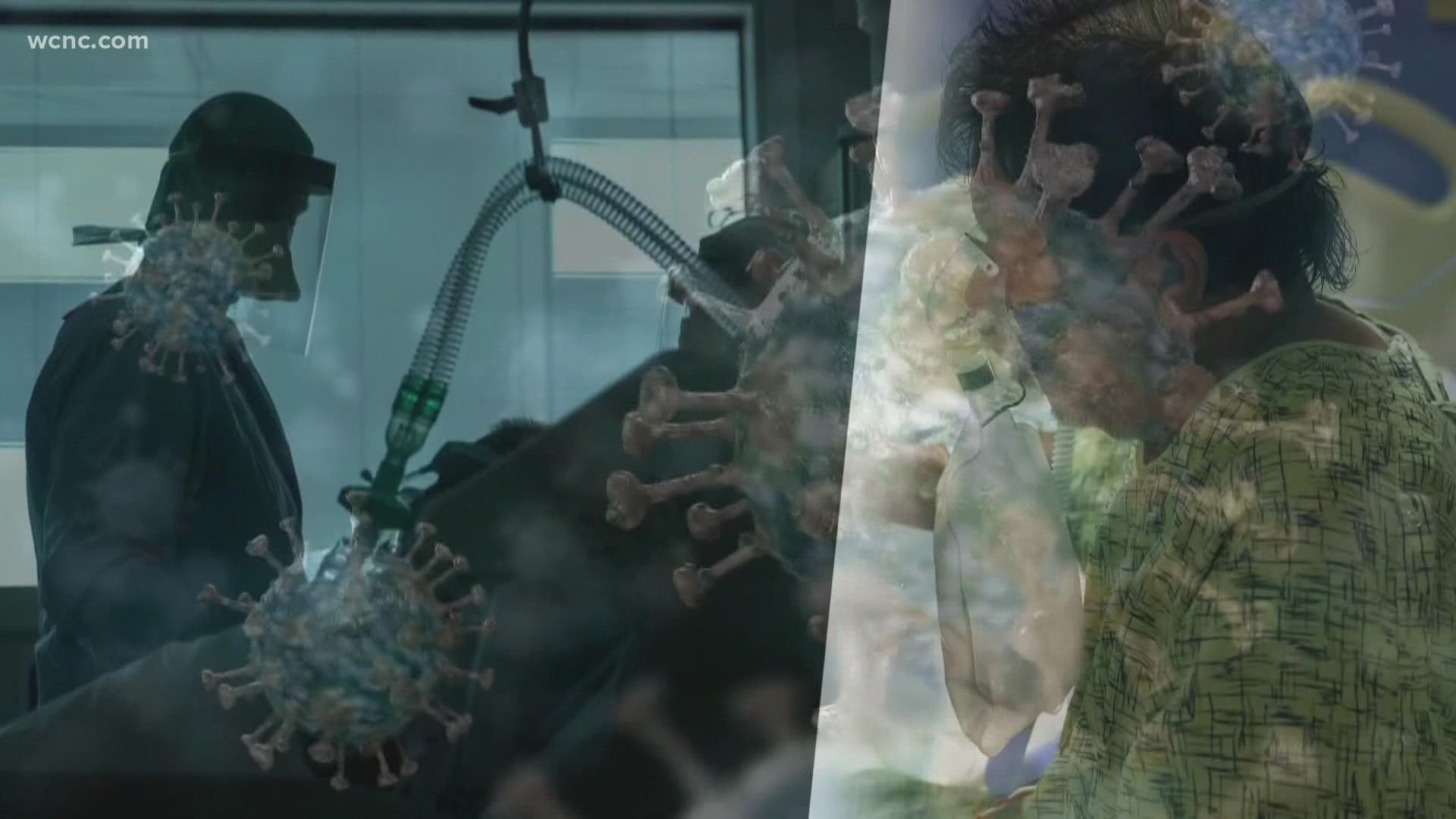CHARLOTTE, N.C. — COVID-19 has been blamed for labor shortages across the United States, especially in the health care field. But economic experts say the pandemic merely exacerbated a long-standing crisis with a shortage of nurses, and data from federal agencies show all but three counties in both North and South Carolina are facing such a shortage.
“We are burned out. The physicians for sure are burned out. We’ve just had a lot of turnover just because of people leaving to go travel nursing or leaving the bedside all together," said Diana Tejada-Pereda, a nurse with Novant Health.
Nationwide, there are fewer available nurses to report to work at hospitals. Since the pandemic began two years ago, the Federal Reserve of St. Louis reports there are 105,000 fewer nurses working in February of this year than in February 2020. That's the equivalent of a 2% loss.
All but three counties in North Carolina - Watauga, Moore, and Wake - are facing some kind of shortage of healthcare workers. In South Carolina, every county is facing at least a partial shortage.
The CaroMont Regional Medical Center in Gastonia says its fully staffed on physicians but is finding ways to bring in more nurses.
“We have had to utilize outside nursing staff as far as traveling nurses are concerned," said Dr. Shiddhi Patel.
Here's a look at how the counties in the Charlotte metro area are faring:
North Carolina's map shows Watauga County is the only county in the Charlotte metro not facing a nursing shortage of any degree. Every other county is facing a shortage in at least part, if not all, of their county.
In the map for South Carolina, all four South Carolina counties in the Charlotte metro are facing some kind of shortage. Chesterfield County is facing a nurse shortage throughout their county.
The maps were produced by the Rural Health Information Hub (RHI Hub), which compiled maps for all states based on data from the Health Resources and Services Administration (HRSA). The Federal Reserve Bank of Richmond (FRBR), which oversees the Carolinas, used that data in their recent analysis of rural communities impacted by nursing shortages.
The staffing situation is not just limited to nurses. Since November 2021, nearly 600,000 health care and social assistance workers left their jobs, the highest on record since the Bureau of Labor Statistics (BLS) started tracking that data in 2000.

